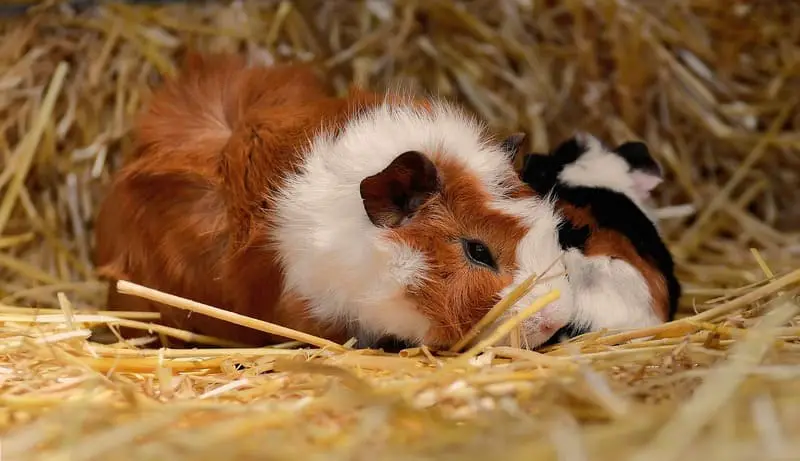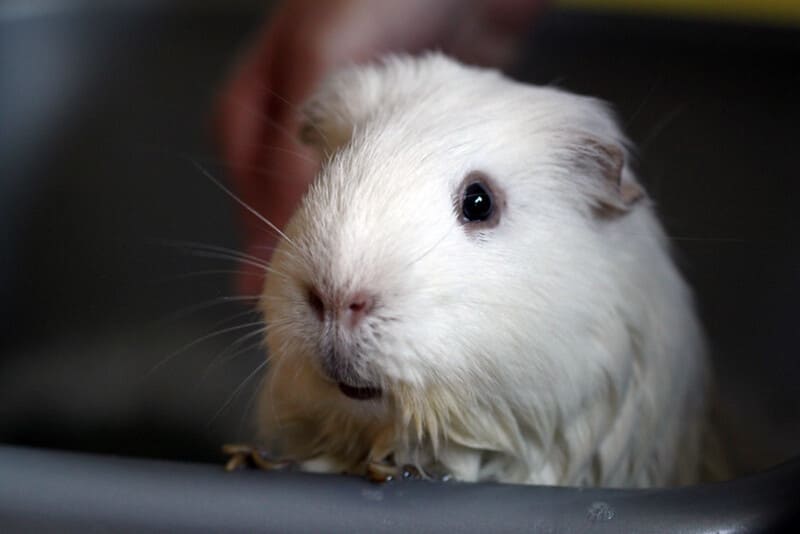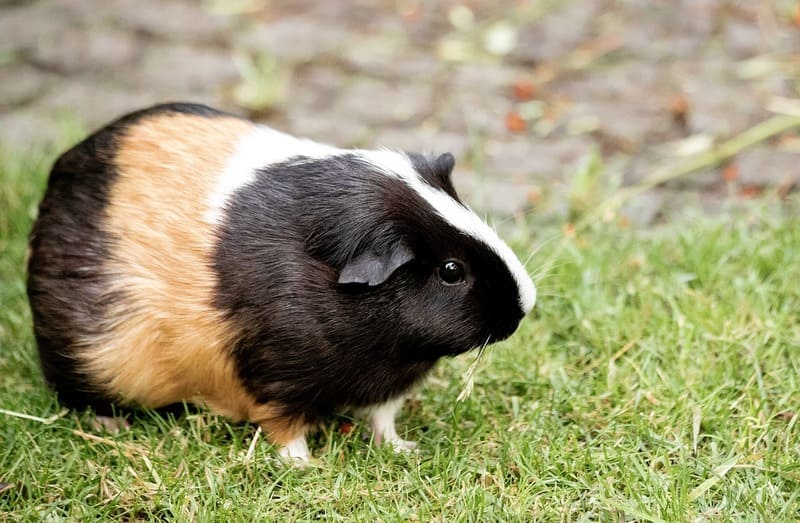Guinea pigs, also known as cavies, are adorable and sociable rodents that have become popular pets around the world. If you’re considering adopting a guinea pig or already have one as a companion, you may be wondering about their daily activity patterns. Are guinea pigs awake during the day or night? Do they have specific sleep habits? In this comprehensive guide, we will delve into the intriguing world of guinea pig behavior, focusing on their daily routines, sleep patterns, and how to create an ideal environment for their well-being.

Understanding Guinea Pig Behavior
Guinea pigs are fascinating creatures with unique behaviors. Understanding their natural instincts and behavior is essential for providing them with the care and environment they need to thrive. Before we explore their activity patterns, let’s take a closer look at some key aspects of guinea pig behavior:
- Social Nature: Guinea pigs are highly social animals that thrive on companionship. They often form strong bonds with their cage mates and can become quite lonely if kept alone.
- Communication: Guinea pigs are not only vocal but also express themselves through various sounds. They use squeaks, purring, and chattering to communicate with each other and their human caregivers.
- Chewing and Grinding Teeth: Guinea pigs have continually growing teeth, so they need to chew and grind to keep their teeth at a proper length. Providing them with appropriate chew toys and fibrous foods is crucial for their dental health.
- Exploration and Play: Guinea pigs are curious creatures that enjoy exploring their environment. They also engage in playful behaviors like “popcorning,” which involves joyful leaps and bounces.
- Hiding and Safety: Guinea pigs have a strong instinct to hide when they feel threatened or need to rest. Providing hideaways in their enclosure is vital to their sense of safety.
- Scent Marking: Guinea pigs may mark their territory with scent glands on their faces. This is a way to establish dominance and familiarity within their group.
- Grooming: Guinea pigs groom themselves and may even groom their cage mates as a sign of affection and bonding.
Are Guinea Pigs Diurnal or Nocturnal?
The question of whether guinea pigs are diurnal (active during the day) or nocturnal (active during the night) is a common one among prospective and current guinea pig owners. Understanding their activity patterns is essential for providing the right care and interaction.
Guinea pigs are primarily diurnal animals, meaning they are most active during the day. In the wild, they forage for food, interact with their group, and engage in various activities during daylight hours. Domestic guinea pigs have maintained this diurnal behavior, and they are typically awake and active during the day.
However, it’s important to note that guinea pigs do not follow a strict diurnal or nocturnal schedule like some other animals. They may have short periods of activity and rest throughout the day and night, but their most significant activity and interaction with their environment typically occur during the day.
Guinea Pig Activity Patterns
Understanding guinea pig activity patterns can help you provide them with the care and attention they need to lead happy and healthy lives. Here are some key aspects of their daily activity:
- Feeding: Guinea pigs are active eaters and require a consistent supply of fresh hay, pellets, and vegetables throughout the day. Their feeding times often coincide with their periods of greatest activity.
- Social Interaction: Guinea pigs are social animals and thrive on interaction with their cage mates and human caregivers. They are more alert and active when they have companions or when they know it’s time for social interaction.
- Play and Exercise: Guinea pigs engage in playful behaviors, such as running around, exploring, and “popcorning.” These activities are more frequent during the day when they are most active.
- Exploration: Guinea pigs have a natural curiosity and enjoy exploring their environment. They may investigate their cage, toys, and any items you provide for their amusement.
- Rest and Sleep: While guinea pigs are primarily diurnal, they do take short naps throughout the day. These naps are typically brief, with guinea pigs remaining alert and responsive even while resting. They may also sleep for more extended periods during the night, although these periods of rest are not as deep as those of nocturnal animals.
- Safety and Hiding: Guinea pigs have a strong instinct to hide when they feel threatened or overwhelmed. Providing hideaways in their enclosure allows them to retreat to a safe space when they need to rest or feel secure.

Guinea Pig Sleep Patterns
Guinea pigs do sleep, but their sleep patterns differ from those of many other animals. While they are active during the day, they do have periods of rest, which include napping and more extended sleep phases during the night. Here’s what you need to know about guinea pig sleep patterns:
- Napping: Guinea pigs take short naps throughout the day. These naps are often brief, lasting only a few minutes to half an hour. During these naps, guinea pigs may rest with their eyes closed, but they remain relatively alert and responsive to their environment.
- Light Sleep: Even when guinea pigs are resting, they are in a state of light sleep. They are easily awakened, and their muscles remain somewhat tense. This is a survival adaptation that allows them to quickly respond to threats or opportunities for food.
- More Extended Sleep at Night: Guinea pigs tend to have more extended sleep phases during the night. While they may be awake and active for periods during the night, their primary rest and sleep occur during these hours.
- Safety and Hiding: Guinea pigs may choose to rest and sleep in their hideaways, where they feel safe and secure. Providing comfortable and private hiding spots in their cage is essential for their well-being.
- Interrupted Sleep: Guinea pigs’ sleep is often interrupted by periods of alertness and activity, which is why they can take short naps throughout the day without having one long, uninterrupted sleep cycle.
- Nocturnal Noises: If your guinea pig is kept in a bedroom or near your sleeping area, you may notice nocturnal noises as they move around, eat, or engage in minor activities during the night. These noises are part of their natural behavior and should not be a cause for concern.
Providing an Ideal Environment
Creating an ideal environment for your guinea pig involves understanding their diurnal activity patterns and sleep needs. Here are some tips for ensuring their well-being:
- Cage Placement: Place your guinea pig’s cage in an area with consistent lighting and temperature. Avoid placing their cage in direct sunlight or drafty locations.
- Hideaways: Provide hiding spots within their enclosure to allow them to rest or sleep when they feel the need. Guinea pigs prefer privacy and security during their periods of rest.
- Consistent Feeding: Guinea pigs should have access to a consistent supply of fresh hay, pellets, and vegetables during their active hours. Feeding them during the day aligns with their natural behavior.
- Social Interaction: Interact with your guinea pig during their active hours, which are typically during the day. Spend time talking to them, offering treats, and engaging in play and petting.
- Nighttime Environment: If your guinea pig’s cage is in a bedroom or sleeping area, be prepared for some nighttime activity. Guinea pigs may engage in light activities during the night, but these are not typically disruptive.
- Routine and Predictability: Guinea pigs feel more secure and less stressed when they have a routine. Stick to a consistent schedule for feeding, playtime, and social interaction.
- Comfort and Safety: Ensure that your guinea pig’s cage is comfortable and safe. This includes providing soft bedding, clean water, and a clean living environment.
- Companionship: Guinea pigs are social animals and benefit from the companionship of their own kind. If possible, consider keeping more than one guinea pig to provide social interaction and support.

The Impact of Companionship
Guinea pigs are known for their social nature, and the presence of companions can significantly impact their activity patterns and well-being. While guinea pigs can be kept as single pets, they often thrive and express more natural behavior when they have cage mates.
If you have a single guinea pig, you may notice that they are more active during the day, as they seek social interaction with their human caregivers. They may also engage in some solitary play and exploration to fill their time.
In contrast, guinea pigs kept in pairs or groups have more opportunities for social interaction, play, and communication with their cage mates. This can lead to more varied and active behavior throughout the day, as they engage in social play, grooming, and vocalization with their companions.
Companionship also provides guinea pigs with a sense of security, reducing stress and promoting well-being. If you’re considering adopting guinea pigs, it’s advisable to keep them in pairs or groups to support their social and emotional needs.
Conclusion
Guinea pigs are diurnal animals, primarily active during the day, but they do have periods of rest and sleep both during the day and night. Their sleep patterns involve short naps, light sleep, and more extended sleep phases during the night. Understanding guinea pig behavior and activity patterns is essential for providing them with the care and environment they need to thrive.
As a responsible guinea pig owner, you can create an ideal environment by offering hiding spots, consistent feeding, social interaction, and a comfortable living space. Whether you have a single guinea pig or a group of them, providing companionship and a supportive living environment is key to their happiness and well-being. Guinea pigs are delightful pets that bring joy to the lives of their human caregivers, and understanding their daily activity patterns is a valuable part of providing them with the care and attention they deserve.
